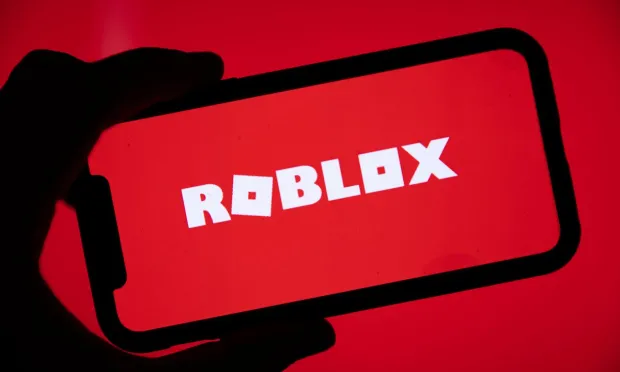The Metaverse Wants to Monetize, but Does That Require Crypto?

There are some mighty big numbers thrown around when analysts and pundits talk about the potential size of the metaverse economy. Bloomberg says in-game transactions and micropurchases could reach $800 billion in 2024, while Citi says $8 trillion to $13 trillion by 2030.
How those purchases will be made, and with what type of currency those purchases will be made, depends on a number of factors. The biggest factor, in many ways, is whether the 3D immersive worlds are built on blockchains or not — that is to say, if they are using cryptocurrencies or not.
Those total economy numbers may seem like pie in the sky (Citi’s assume technological advances like a 1,000x improvement in streaming), but the existing metaverse economy can show some pretty big numbers. So it’s worth looking at how payments in the two systems work and how they differ.
The biggest existing metaverse, by far, is Roblox. It launched in 2006 — three years before Bitcoin — and reportedly has 54 million daily active users. And it doesn’t use cryptocurrencies for payments. The other biggie is Epic Games’ Fortnite, which is primarily a massively multiplayer online game (MMO) that is transitioning into a metaverse. That process essentially involves adding more lands while attracting developers, retailers, entertainers and other money-making projects to set up shop.
Read more: What’s a Metaverse, and Why is One Having a Fashion Show?
Both are free to play, and both Roblox and Epic make money from in-game microtransactions. Both offer premium subscription tiers with special benefits ranging from free currency to special in-game items, such as character skins and special weapons. And in-game project developer subscription fees are possible.
Blockchain metaverses like Decentraland and The Sandbox are also free to play. In all cases, the transaction economy assumes not just the sale of virtual (and likely real-world) goods, but also pay-to-play microgames, subscription services and ticketing fees.
Free, or Captive?
But the payments currencies the two types use have one basic difference. Roblox and Fortnite use currencies created and controlled by the developers — Robux and V-Bucks, respectively. The metaverses use cryptocurrencies, meaning that aside from their value in terms of paying for things in-game, they are also heavily influenced by speculation.
That, of course, means that the value of the currency in-game developers and retailers make could fluctuate just as wildly as bitcoin.
While both blockchain metaverses are still essentially in beta and don’t really have much of an internal economy outside of the sale of plots of “land” on which to build, their token prices have fluctuated wildly along with the broader crypto market. Decentraland’s MANA tokens peaked at $5.90 at the height of the bull market in November and are now selling for $0.85. The Sandbox’s SAND has gone from $8.44 to $1.08 at present.
While the metaverse is hyped up by analysts’ reports and celebrities moving in — Snoop Dogg gets Decentraland a lot of press — it’s all driven by speculators. And as both are decentralized projects, the developers will have even less control as the economy grows. But they will also make or lose money on their own substantial token holdings.
Roblox charges developers 25% of a game’s revenue, but there’s also a big cut taken in the exchange rate. It costs $1,000 to buy 100,000 Robucks. Developers, who needed that many as a minimum to cash out, got $350.
Roblok developers whose in-world games are free to use are eligible for Premium Payouts, but subscriptions can also be charged.
Fortnite has an average of 24 million daily active users and more than 260 million unique players monthly. It’s V-bucks are worth $0.01, and creators have to earn $100 in 12 months to cash out. It does not have a cryptocurrency, and the Fortnite Tokens on the market are “a scam,” Fortnite CEO Tim Sweeney has said.
Decentraland and The Sandbox have made, and are making, a lot of money selling virtual plots of land, with some neighborhoods hotter than others. These plots are another facet of the economy, with “land” speculation already attracting investors as well as major brands building marketing experiences and shops selling NFT in-game items like clothing.
But the real estate is considered a big enough deal that Citi Global Perspectives & Solutions’ (GPS) “Home of the Future” report on the real estate industry included a page on crypto-backed mortgages for virtual land.
How to Earn
For developers, regardless of platform, games that people come back to over and over and in-game merchandise like avatar clothing are potential big earners.
The non-metaverse games are ahead in large events and concerts due to their audience sizes. FortNite jumpstarted metaverse concerts — and to a certain extent investor belief in the potential value of the metaverse in general — with rapper Travis Scott, who drew nearly 46 million fans across five live concerts in April 2020.
That November, Lil Nas X drew 33 million people across four shows over two days in Roblox. And a year later, Swedish pop star Zara Larsson sold more that $1 million worth of avatar clothing and accessories in six months. In March, Roblox and Sony Music announced that rapper 24kGoldn would hold a series of concerts and pre-show “fan experiences,” drawing 1.6 million fans.
Metaverse events have a way to go, and their users numbers are so far dismal. But the potential is there, investors believe.
See here: Behind the Hype, Metaverse Marketing Offers Dismal ROI
Sign up here for daily updates on all of PYMNTS’ Crypto coverage.
